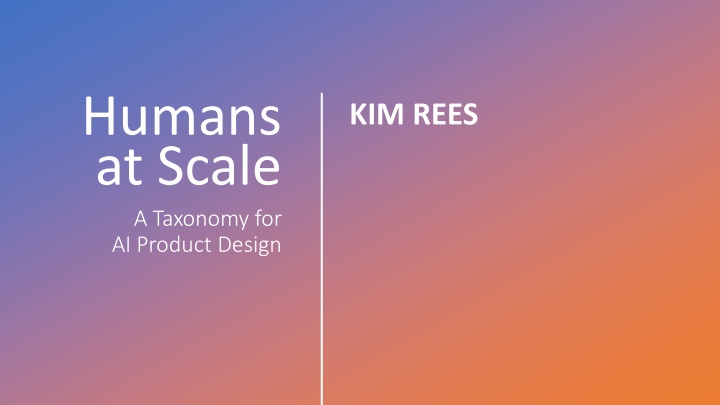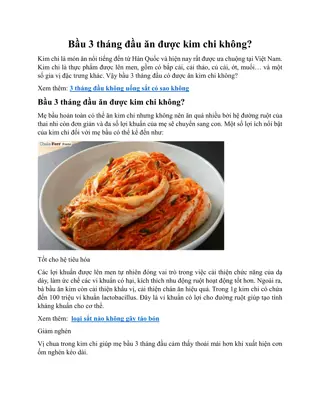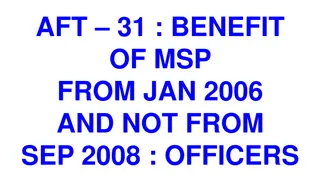
AI Product Design Taxonomy and Cognitive Skills Analysis
Explore the taxonomy of AI product design and the cognitive skills hierarchy. Dive into examples of fraud detection using AI technology and innovative ideas from Google Photos. Understand the concept of AI scaling humans and the implications on human productivity. Discover the Bloom's Taxonomy levels for cognitive development to enhance learning and critical thinking.
Download Presentation

Please find below an Image/Link to download the presentation.
The content on the website is provided AS IS for your information and personal use only. It may not be sold, licensed, or shared on other websites without obtaining consent from the author. If you encounter any issues during the download, it is possible that the publisher has removed the file from their server.
You are allowed to download the files provided on this website for personal or commercial use, subject to the condition that they are used lawfully. All files are the property of their respective owners.
The content on the website is provided AS IS for your information and personal use only. It may not be sold, licensed, or shared on other websites without obtaining consent from the author.
E N D
Presentation Transcript
Humans at Scale A Taxonomy for AI Product Design KIM REES
AI is the simulation of human intelligence in machines designed to perform tasks that typically require human intelligence. AI Scale AI scales humans. Human Scale
fraud detection EXAMPLES:
fraud detection Google Photos EXAMPLES:
fraud detection Google Photos ChatGPT EXAMPLES:
What if I could take you and shrink you and I could put you inside your own phone and dedicate you to photo management? David Lieb Product Lead, Google Photos
What if I could take you and I could put you and dedicate you you and shrink you you inside your your own phone you to photo management? you David Lieb Product Lead, Google Photos
What if I could take you and I could put you and dedicate you you and shrink you you inside your your own phone you to photo management? you AI Scale David Lieb Product Lead, Google Photos Human Scale
CREATING Make something new 6 EVALUATING Make judgments 5 ANALYZING Identify relationships 4 APPLYING Apply acquired knowledge 3 UNDERSTANDING Grasp meaning of materials 2 REMEMBERING Recall specific facts 1 Bloom s Taxonomy: Cognitive Domain
Higher Order Thinking Skills CREATING Make something new 6 EVALUATING Make judgments 5 ANALYZING Identify relationships 4 APPLYING Apply acquired knowledge 3 UNDERSTANDING Grasp meaning of materials 2 REMEMBERING Recall specific facts 1 Bloom s Taxonomy: Cognitive Domain Lower Order Thinking Skills
CREATING Make something new compose, construct, create, design, develop, generate, make, modify, perform, plan, produce, synthesize, write 6 EVALUATING Make judgments assess, critique, decide, determine, evaluate, grade, judge, measure, rank, rate, recommend, review, score, validate 5 ANALYZING Identify relationships analyze, break down, contrast, deconstruct, detect, diagram, differentiate, explain, inventory, order, separate 4 APPLYING Apply acquired knowledge apply, calculate, execute, generalize, illustrate, implement, interpret, modify, organize, outline, predict, solve, translate 3 UNDERSTANDING Grasp meaning of materials arrange, categorize, classify, compare, estimate, explain, give examples of, infer, rewrite, summarize, convert 2 REMEMBERING Recall specific facts cite, define, describe, identify, label, list, match, outline, recall, report, reproduce, retrieve, state, tabulate, tell 1
AI Computing CREATING Make something new compose, construct, create, design, develop, generate, make, modify, perform, plan, produce, synthesize, write 6 EVALUATING Make judgments assess, critique, decide, determine, evaluate, grade, judge, measure, rank, rate, recommend, review, score, validate 5 ANALYZING Identify relationships analyze, break down, contrast, deconstruct, detect, diagram, differentiate, explain, inventory, order, separate 4 APPLYING Apply acquired knowledge apply, calculate, execute, generalize, illustrate, implement, interpret, modify, organize, outline, predict, solve, translate 3 UNDERSTANDING Grasp meaning of materials arrange, categorize, classify, compare, estimate, explain, give examples of, infer, rewrite, summarize, convert 2 REMEMBERING Recall specific facts cite, define, describe, identify, label, list, match, outline, recall, report, reproduce, retrieve, state, tabulate, tell 1 Traditional Computing
AI Computing CREATING Make something new Example: Generative models like GANs (Generative Adversarial Networks) for creating art, music, or text. 6 EVALUATING Make judgments Example: BERT using contextual embeddings for nuanced sentiment analysis in natural language text. 5 ANALYZING Identify relationships Example: Facial recognition models like FaceNet for analyzing and identifying faces in images. 4 APPLYING Apply acquired knowledge Example: Image processing models such as CNNs for applying filters or enhancing images. 3 UNDERSTANDING Grasp meaning of materials Example: Text-to-speech (TTS) algorithms that convert text into spoken words. 2 REMEMBERING Recall specific facts Example: Information retrieval algorithms used in search engines to retrieve relevant documents based on queries. 1 Traditional Computing
Methodology By identifying human goals, we can use those verbs to identify what AI capability is suitable to fulfill the need. AI Model Test/Refine Goals Tasks Input/Output Test model and iterate as needed Identify what the user is trying to do. Break that down into discrete tasks. What data is needed as input? What type of model is best suited for this job What are the necessary outputs? VERB DATA AI
AI Capability Goals Tasks Input/Output See all photos of my children over time. Label, categorize, sort, identify In: Timestamped photos. Initial tagged set. Computer vision / image recognition Out: labeled people
AI Capability Goals Tasks Input/Output See all photos of my children over time. Label, categorize, sort, identify In: Timestamped photos. Initial tagged set. Computer vision / image recognition Out: labeled people Make a collage of photos from my vacation. Identify, arrange, create, generate, design, write In: Photos with EXIF location data GANs, object recognition, content- based filtering Out: Photos ranked, layout, text, design
CREATING Make something new compose, construct, create, design, develop, generate, make, modify, perform, plan, produce, synthesize, write 6 EVALUATING Make judgments assess, critique, decide, determine, evaluate, grade, judge, measure, rank, rate, recommend, review, score, validate 5 ANALYZING Identify relationships analyze, break down, contrast, deconstruct, detect, diagram, differentiate, explain, inventory, order, separate 4 APPLYING Apply acquired knowledge apply, calculate, execute, generalize, illustrate, implement, interpret, modify, organize, outline, predict, solve, translate 3 UNDERSTANDING Grasp meaning of materials arrange, categorize, classify, compare, estimate, explain, give examples of, infer, rewrite, summarize, convert 2 REMEMBERING Recall specific facts cite, define, describe, identify, label, list, match, outline, recall, report, reproduce, retrieve, state, tabulate, tell 1
AI Ethics and Knowledge Workers diminishing value of expertise expertise increasing value of AI AI advances Junior Senior experience
AI Ethics and Knowledge Workers Suggestions Co-create with the people who do that task today. Every verb that AI can do has been trained on data by humans who do that task today. What bias might be in that data? For instance, computer vision is notorious for having racial and cultural biases. Is the product replacing or augmenting people? Who has sovereignty of that data? How can we mitigate that bias?
Humans at Scale A Taxonomy for AI Product Design KIM REES Thank you youknowkimrees@gmail.com





















